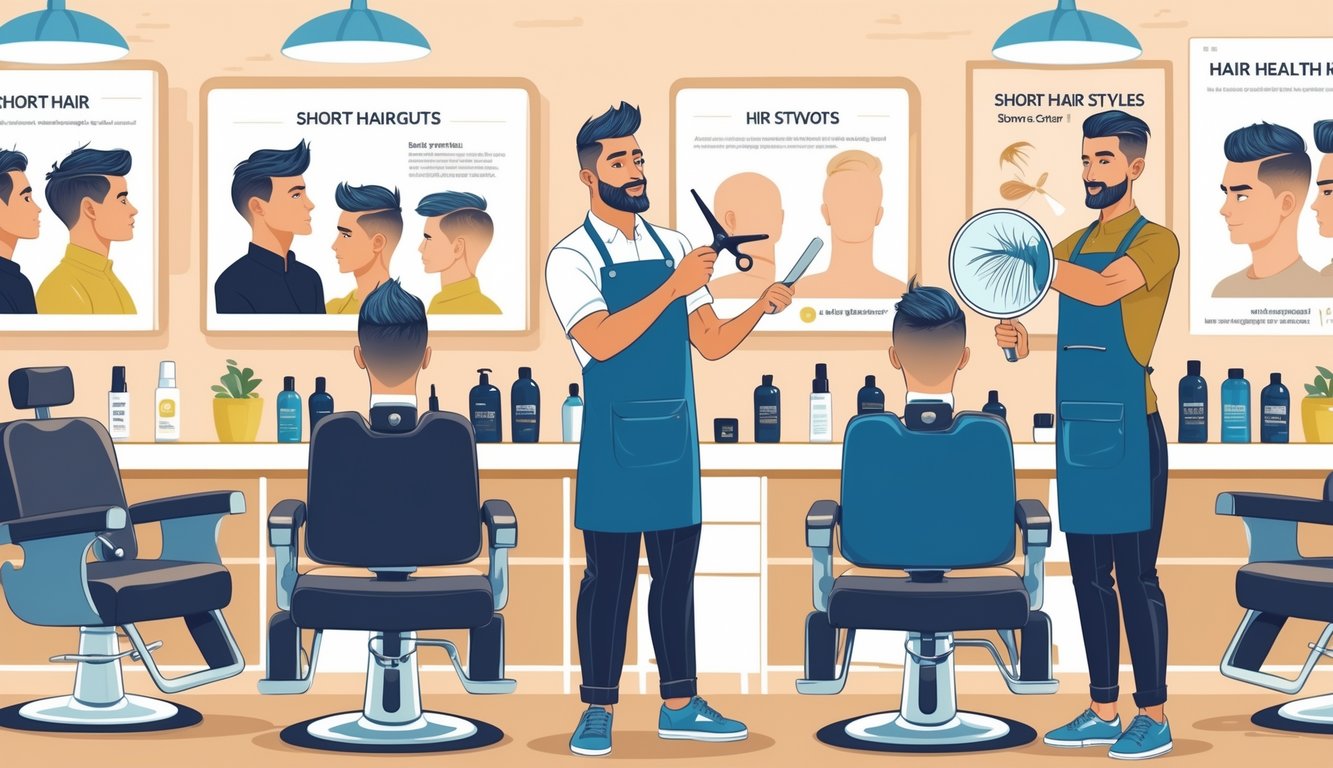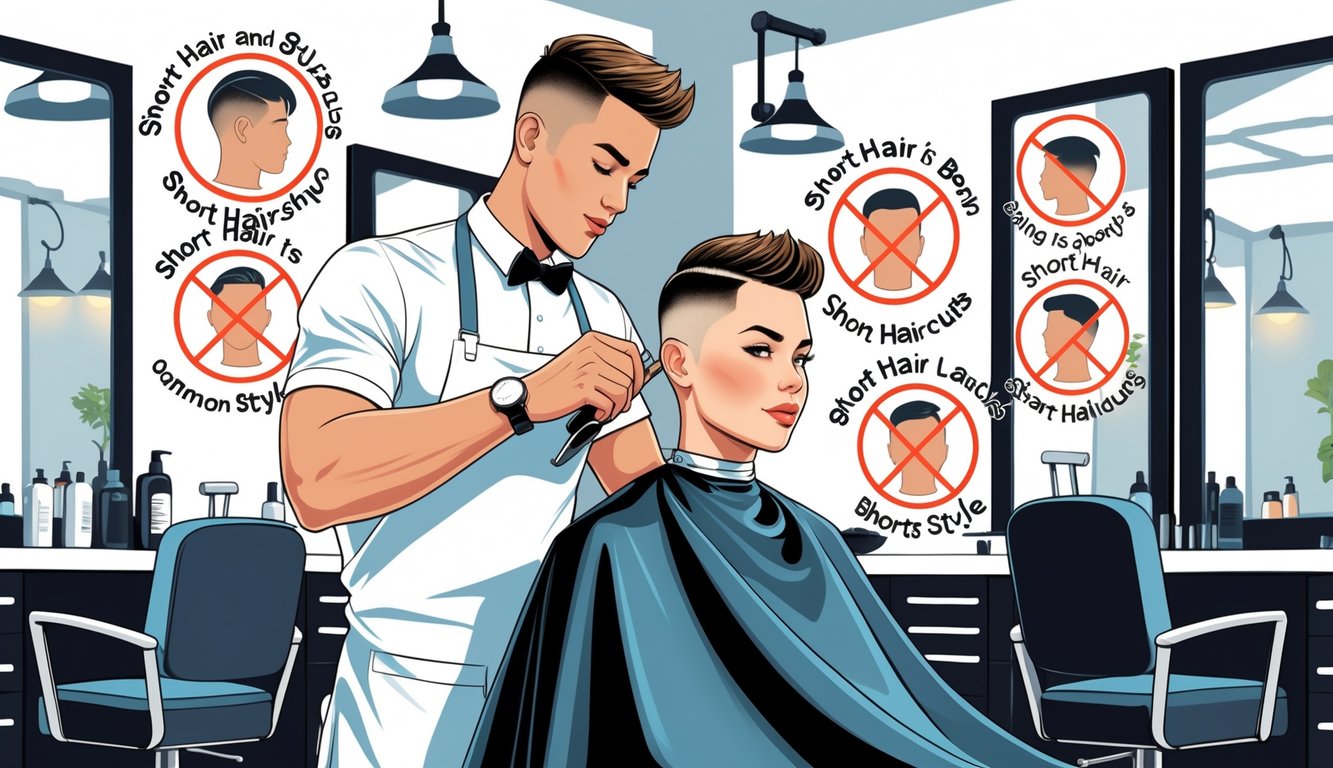
Styling and Versatility of Short Hair

I keep seeing influencers chop their hair, then panic-text their stylist two weeks later. Nobody talks about how weird that in-between phase is. Short hair isn’t a creative dead end, and razors aren’t just for buzzcuts. Products and habits make or break the style.
Creative Short Hairstyles
My camera roll is full of screenshots: micro-bobs, stacked pixies, that asymmetric cut Vogue says is for under-30s (they’re wrong). Why does the bixie suddenly make every jaw look sharper? Barbers say it’s all about texture—point-cutting, razoring, mixing up the tools for movement. Nobody warns you how fine hair goes flat with heavy product—skip mousse, grab salt spray.
Last month, my barber blended clippers and scissors for what he called a “hybrid fade.” His station looked like a tool shed exploded. He showed me how curly crops or tight bobs stay sharp with regular nape cleanups—so much more work than the “messy, grown-out” myth online. Want proof? 2025’s short hair trends: layered bobs, playful pixies—it’s not “mom hair” anymore.
Styling Products and Techniques
If one more person says “just use hairspray,” I might scream. For me, styling short hair means a graveyard of half-used products and more stress than anyone admits. Pomade, texture cream, matte paste—they all end up on my shelf. Most days, I reach for lightweight wax or my hair looks greasy by lunch.
Barbers keep preaching about boar bristle brushes and razor technique. It’s not just about the cut—it’s about keeping ends feathered, roots tamed. My friend with curls? Obsessed with argan oil serum (I keep forgetting to buy it). Heat tool damage is way more obvious on chin-length hair, so heat protectant isn’t optional.
I’ve learned the tiniest dab of the right stuff gives definition, but too much ruins everything. There’s a learning curve here—nobody mentions that on the label. If you want to geek out about why hair thickness, damage, and habits change everything, check this guide.
Short Hair and Lifestyle Considerations
So, yeah, here’s the thing nobody really says out loud: short hair isn’t some magical “get up and go” solution, no matter how many times I try to convince myself otherwise while half-asleep, spraying dry shampoo and cursing my gym schedule. Wind? It just messes everything up. Collars? They flatten my hair into sad little pancakes. But hey, at least I’m not yanking knots out every morning or staring at split ends. My stylist keeps telling me it’s not easier, just, like, a whole different set of headaches. If you ask someone who actually cuts hair for a living, they’ll straight up tell you: chopping it off just makes you face your habits, not escape them.
Adapting Your Grooming Experience
Let’s be real, everyone acts like less hair means less time, but every time I get a pixie, I end up panic-buying random styling creams because my hair sticks out in ways nobody warned me about. Sure, a flat iron works faster—“five minute hair” is a lie, but it’s not a total lie. If you skip product, though, the style just gives up by lunch.
People always ask for “wash and wear” but, seriously, if you’re using stuff like featherweight mousse or texturizing clay (look, I’m loyal to Blumaan Cavalier, it’s the only one that doesn’t turn to glue after a few uses), you start to notice that shampoo matters way more than you thought. My barber keeps pushing sulfate-free stuff for short cuts, says it stops scalp gunk, especially if you shower every day. I tried to use my old shampoo from when my hair was longer—nope. Just made everything flat and itchy, and don’t even get me started on what happens if you bike to work.
Chopping your hair short just throws you into this world where you realize—wait, this is not “set it and forget it.” Even pros debunk that myth: habits from long hair days just don’t cut it. Suddenly, you’re going in for trims every few weeks, and the product graveyard in your bathroom just keeps growing.
Active Lifestyles and Hair Management
What really gets me? Sweat. Like, I finish a run, rinse off, and my hair basically turns into a map of wherever my headband sat. My trainer never cared about scalp hygiene until she hacked her hair off, and now she’s obsessed with microfiber towels—says they stop frizz. I’m skeptical, but whatever.
People assume being sporty means less hassle, but honestly, short hair just trades you one set of problems for another. Helmets? Ruin any volume I ever had. Swim caps? Don’t even. And after biking, if I used heavy wax, I always regret it. If you’re outside a lot, SPF sprays suddenly become a thing—unless red, peeling scalp is your vibe.
Hats are a mixed bag. Baseball caps hide the mess, but then your roots stew in sweat, and after boxing, no dry shampoo on earth fixes the “plastered to your face” look. Stylists call it “chic,” but come on. I read a psychology article saying most women cut their hair short during big life changes, but nobody warns you about how it means rethinking every little routine, from pillowcases to how many times you check yourself in the mirror before Zoom calls.
Professional Haircuts Vs. DIY Short Haircuts
So, DIY haircuts? I keep watching YouTube tutorials, but somehow, every time, I end up with a jammed clipper and a lopsided fade. Looks easy, right? It’s not. The stress is real—there’s money, skill, and that moment you realize you can’t see the back of your head. Every time I compare my own botched jobs to what a real barber does, it’s like, why did I even try? Those “life hack” videos are lying.
Why Professional Consultation Matters
First time I sat down for a real consultation? Awkward. But it changed everything. No two heads are the same. Barbers just get it, even if you show up with a blurry Pinterest screenshot and a vague “just make it look good.” YouTube “pro tips” never tell you how one weird cowlick can ruin a pixie or that pro shears actually are sharper, not just a sales pitch.
They’ll tell you stuff like, “Don’t use a razor here,” or “Over-texturizing will wreck your fine hair,” or that your undercut idea is, like, two years out of date. And, honestly, some surveys say a decent clipper costs more than a couple shop visits anyway. But the real thing you can’t buy is that on-the-fly fix a pro makes when you say “just a trim” but your hair does something weird. The crisp lines from a barber? Forget about it. They even keep notes on your hair. I can’t remember what shampoo I used last week.
Home Cuts: Risks and Realities
Every time I pick up scissors in my bathroom, it’s like, “How bad could it be?” Then it’s bad. Lopsided fades, random bald spots, bangs so short I look like I lost a bet. Stylists say once you mess up, you just keep trying to fix it, and it spirals. Barbers get these “fix me” walk-ins all the time. DIY isn’t a cute hack—it’s a gamble that usually ends with a buzz cut.
Trying to save some cash by skipping the shop? It’s a weird game. I bought a Skull Shaver once—huge mistake. Even the best clippers don’t replace someone who knows what they’re doing. Skill matters. A barber’s clean fade or sharp outline? I never get that at home. And nobody on Instagram ever admits how many hats or “emergency” appointments they needed after their DIY disaster. For every home haircut win, there are a dozen people crawling back to the shop, paying double to fix it. Barbers love to remind me about my last crooked neckline.



